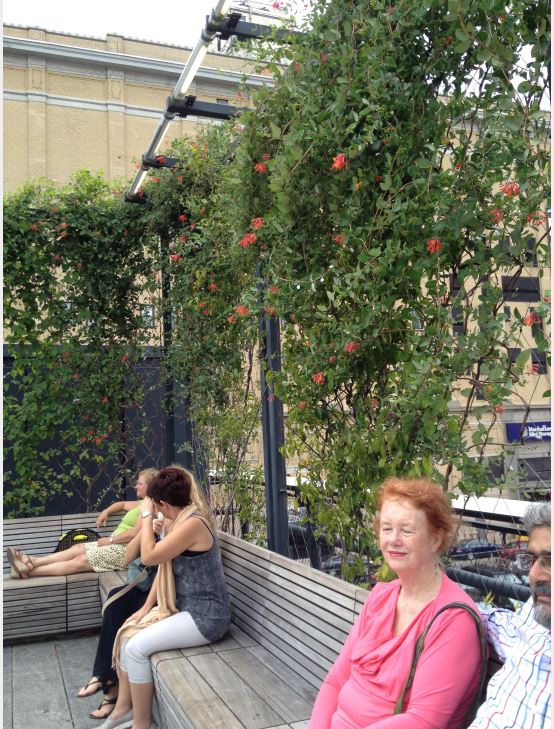Although many people say they want a perennial garden, such a garden need not be exclusively perennials since there are often instances when a perennial will not fill the bill. There is often a need for a vertical element that is more lasting than the stalk and bloom of a tall perennial. This is when we need to consider using a vine on a trellis or some other form of support.

High Line in New York.

The usual vine of choice is Clematis. Although I am a Clematis junkie, I am also a fan of Lonicera sempervirens, the Trumpet Honeysuckle. This honeysuckle is native to the Eastern United States; there is some debate as to whether it is truly an Ohio native but it is native in Kentucky. There is also debate about whether it is fragrant. While optimal growing conditions are medium moisture and well-drained, neutral to acidic soils in full sun, I have found that it also thrives in dry soil, once established. I have a client who planted the cultivar ‘Major Wheeler’ along her driveway fence several years ago and it is always in bloom whenever I visit. She watered well the first few years and has given it very little attention since then. ‘Major Wheeler’ is resistant to mildew and a selection from the native. ‘Blanche Sandman’ is he most resistant to aphids.
This honeysuckle is a vigorous grower that can reach 10 to 20 feet tall and 3 to 6 feet wide. However, it can also be allowed to sprawl as a ground cover. Since it flowers on new growth, avoid pruning until after flowering, thus late fall. The profuse, red-orange tubular blooms are supposedly irresistible to hummingbirds providing them with natural nectar all season long (from late June until frost). Another huge plus for this vine is that the deer ignore it.


The cultivar ‘John Clayton’ is similar but has golden yellow flowers.
There are some other native species but I would not recommend them because they fruit and could, therefore, be considered invasive. If being a native is not a prerequisite, the species periclymenum has some lovely cultivars in shades of pink and yellow and they are fragrant.
Try to remember that a vertical element in the garden makes it much more interesting.


0 Comments